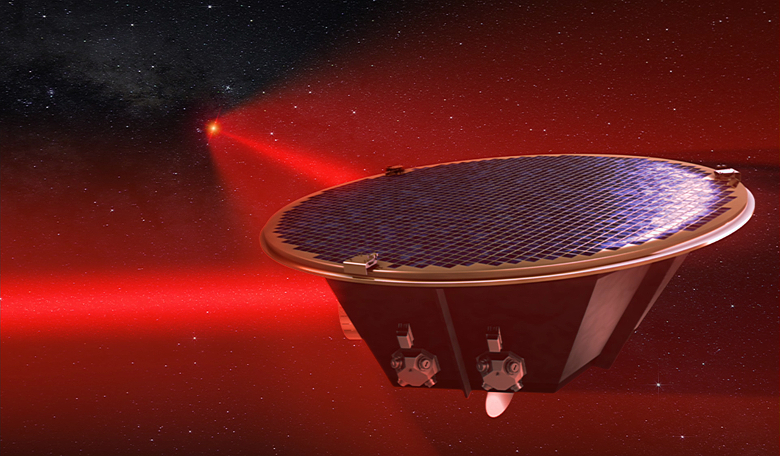ESA have given the go ahead for the Laser Interferometer Space Antenna (LISA) to become a fully-fledged mission as part of its Cosmic Vision plan. Launch is expected in 2034.
LISA will be on the hunt for low-frequency gravitational waves (around 10-4 Hz to 10-1 Hz) which on Earth are blotted out by local noise. Significant progress has already been achieved with the ground-based LIGO detectors for these ripples in spacetime, however these interferometers search for waves at a higher frequency than what LISA will detect.
By detecting gravitational waves within a broader spectrum of the electromagnetic spectrum, it could help scientists to understand the Universe in a whole new way, and could give insights into the link between gravity and quantum physics.
A preceding mission to test the feasibility of the program is already underway and will shortly complete its science operations on 30th June. Known as LISA pathfinder, the program set out to prove that two test masses can fly through space, untouched but shielded by the spacecraft while simultaneously being placed in a nearly perfect gravitational free-fall. As the test masses are free from all external (and internal), non-gravitational forces, their relative motion can be measured with unprecedented accuracy, thus allowing the detection of tiny perturbations on the scale of a few millionths of a millionth of a metre.
"The whole point of LISA Pathfinder was to validate the technology for LISA, which requires test masses to be kept motionless to unprecedented levels of accuracy," says Paul McNamara, LISA Pathfinder Project Scientist at ESA. "The system was built so well that the difference in the gravitational field coming from the satellite itself, at the two test mass positions, was essentially zero," says McNamara.
As LISA pathfinder has exceeded the requirements set for the mission, including the accuracy required for LISA at all frequencies, ESA has selected the mission for its third large-class mission, L3. L3 will focus around the gravitational Universe, in particular waves created by celestial objects with very strong gravity, such as pairs of merging black holes; a phenomena that was hypothesised by Albert Einstein a century ago.
ESA also announced in the same meeting that its PLAnetary Transits and Oscillations of stars (PLATO) mission has also been given the green light, following its selection in February 2014.
PLATO is the third medium-class mission in ESA's Cosmic Vision programme and its aim is to find and study a large number of extrasolar planetary systems, in particular those that mirror our own solar system i.e terrestrial-type planets in the habitable zone around solar-like stars.











